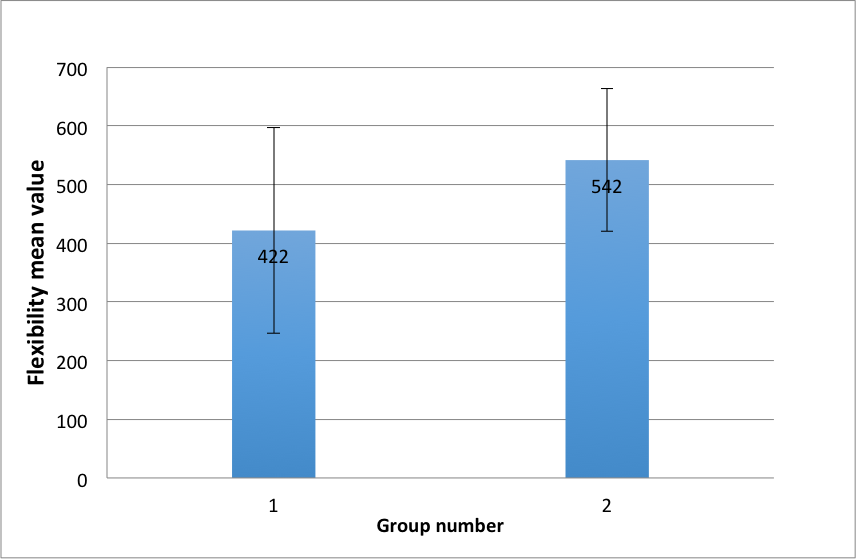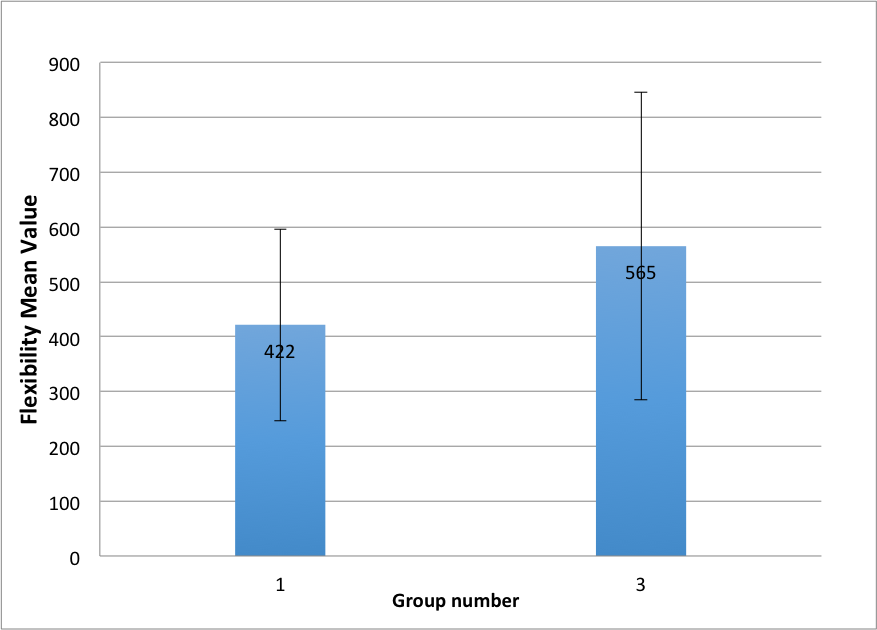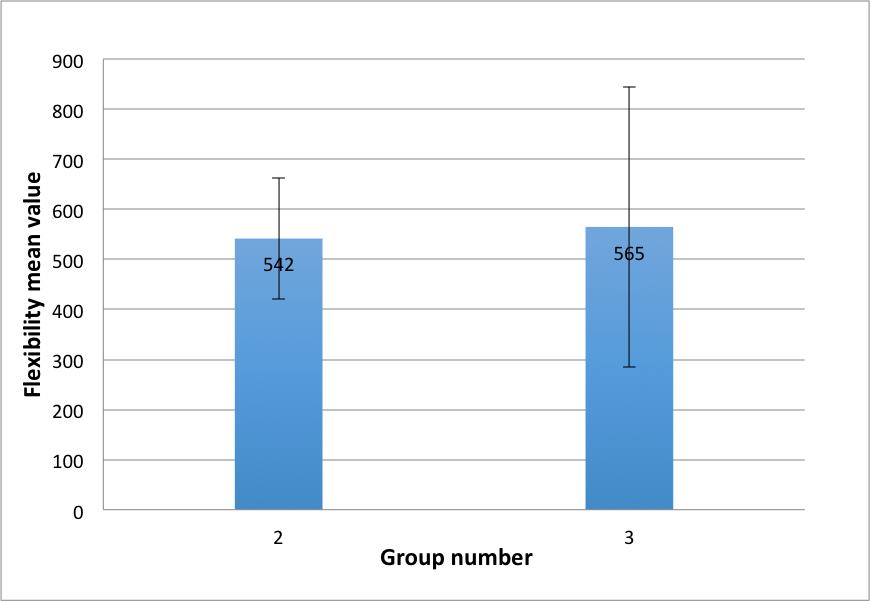Introduction
Intellectual flexibility is labeled as one of the cerebral capabilities to shift between judging binary perceptions and thinking about various ideas concurrently. A diversity of valuations is suitable for differentiating amid diverse heights of cognitive suppleness. There is a variety of health benefits associated with Dark chocolate. Black chocolate is good for cardiac health since it improves the flow of blood and might assist in prevention of blood coagulation. Dark chocolate also is also recognized as good for cerebral health since it increases blood flow to the brain and reduces the risk of cardiovascular diseases (Smit 2011, p. 214). Therefore, it can help in improving cognitive function.
Background of the project
The “Cognitive Flexibility and Chocolate” project is a part of a huge project called The STARS project. It is a Deakin project based on national learning and teaching grant. The participants of this project were from the main two campuses of Deakin University: Geelong and Burwood.
Aims of the project
In this mini project, we attempt to get a general idea about cognitive flexibility and how it works. It also tests the effect of Cocoa “dark chocolate” on cognitive flexibility. We attempt finding out whether dark chocolate has health benefits for the cerebrum or not. The way of doing that is by using an online brain training game called Lumosity. The procedure is fully described in details in the “Method” section.
The aims of this project are:
- Getting research experience.
- Creation of my first project.
- Finding out the relationship between chocolate and the brain.
Hypothesis
The hypothesis for testing in this project is that ‘playing Lumosity twice a week increases cognitive flexibility on those who consume 20g of dark chocolate everyday more than those who consume white chocolate every day’.
Method
Group formation
- There were three main groups formed to get the appropriate data to test the previous hypothesis from different perspectives.
- The formation of groups was based on:
- Types of chocolate used, either white or black.
- Eating or not eating chocolate.
- Playing Lumosity twice a week.
The groups are:
- No chocolate / Play Lumosity Brain Training Game 2 times / week.
- Eat 20g of dark chocolate per day for 20 days/ Play Lumosity Brain Training Game 2 times/week.
- Eat 20g of white chocolate per day for 20 days/ Play Lumosity Brain Training Game 2 times/week.
Chocolate consumption
- There were two types of chocolates used in this study: white chocolate and dark chocolate.
- Dark chocolate with 85% cocoa.
- White chocolate with 30% cocoa.
- The amount of consumption was 20g every day.
Calculating cognitive flexibility of the brain
- The calculation of Brain flexibility was performed using the online brain training game called Lumosity.
- Neuroscientist designed Lumosity to exercise memory, attention, flexibility, speed and problem solving. The result is then applied in calculating the overall Brain Performance Index (BPI).
- Participants play the game only twice a week.
Duration of the study
The study was for only 20 days
Comparison between groups
- Groups with similar standards were compared with each other.
- The strategy used was a comparison of 2 data sets in identifying the difference(s) between them.
- Statistical analysis been used for accuracy “T-test”.
- The order of group comparison was:
- Group 1 with group 2
- Group 1 with group 3
- Group 2 with group 3
The study involved testing of every possible angle to attain the highest level of accuracy.
Results
Table 1: Results of flexibility mean, standard deviation, and p-value of different groups after 20 days.
* Indicate a significant difference (p< 0.05) between the groups. ** Indicate no significant difference (p> 0.05) between the groups.
As indicated in the table, the highest flexibility Mean Value is 565, found on group 3 (dark chocolate). The least flexibility Mean Score is 422, found in group 1 (no chocolate). The p-value between group 1 and group 2 is <0.05 which means it is statistically significant while the p- value between group (1 vs. 3), and group (2 vs. 3) is higher than 0.05 (>0.05) which means that it is not statistically significant. The standard deviation for all three groups is relatively high at over 100 (>100).

The figure shows group 1 (no chocolate) column which gives the overall flexibility mean value of 422 for 29 participants and group 2 (white chocolate) column which indicates the overall flexibility mean value of 542 for 10 participants after 20 days.
From figure 1, there is a relatively big different between the flexibility mean of group 1 and group 2. As we can see, group 1 has 422 score while group 2 has 542 score. The different between both is 120 points.

The figure shows group 1 (no chocolate) column which gives the overall flexibility mean value of 422 for 29 participants and group 3 (dark chocolate) column which indicates the overall flexibility mean value of 565 for 19 participants after 20 days.
As we can see above in figure 2, there is an increase in flexibility mean in group 3 (group that consume chocolate) compared to non-chocolate eating group (group 1). The difference between the groups is 142 points.

Finally, figure 3 shows a comparison of both groups which consume chocolate, group 3 (dark chocolate) and group 2 (white chocolate). The analysis compared the cocoa effect on cognitive flexibility. The difference between them was not high, only 23 points. However, it demonstrates that dark chocolate scores higher than white chocolate (565 to 542).
Discussion and conclusion
For optimum cerebral functioning, cerebral brain flow (CBF) requires good maintenance to back up continuous oxygen and glucose supply to neurons in addition to waste elimination. Escalation in CBF represents possible ways of improving analytical working. The main polyphenols that boost CBF in humans mainly come from cocoa, soya, grape seeds, tomatoes and tea (Ghosh & Scheepens 2009, p. 327). At the cardiovascular level, polyphenol-abundant cocoa prompts vasodilation. The consumption of a particular quantity of chocolate rich in flavanol escalates CBF in grey substance. It also reverses endothelial dysfunction in a dose-reliant manner suggesting its prospective ability in treating cerebrovascular problems (Francis 2006, p. 17).
Research indicates that flavonoids effect cognitive operation by persuading the signal corridors engaged in regular memory dispensation. The results of flavonoid-rich diets on cognitive working are connected to the capability of flavonoids to work together with the molecular and cellular patterns accountable for recall and knowledge. The cellular and molecular patterns include those involved in long-term potentiation and flexible responsible to more than two events taking place in the brain (Spencer 2008, p. 66). These influences are assumed to result in higher neuronal construction as well as conversation in order to increase the size for memory gaining, loading and recovery.
The consumption of dark chocolate (containing high levels of flavonoids from cocoa) gives the brain ability to protect vulnerable neurons. It also improves neuronal functioning while stimulating renewal through interaction with neuronal motioning pathways that control neuronal survival and memory. The consumption of chocolate is linked to the expressive relaxation. The effect is associated with the capacity of chocolate to promote positive feeling via the discharge of multiple gut and cerebral peptides (Jellinger 2001).
The activation of synaptic flexibility by chocolate and cocoa enables an individual to be able to engage the brain in several different activities that lack in those who do not consume dark chocolate. The neuro-toxicants like oxygen extremists come into the cerebral system to excite perfusion and arouse alterations in the neuron make up (Jellinger 2001, p. 17). The research has revealed interesting facts about cocoa and chocolate. It is imperative for individuals to consume chocolate though in regulated amounts to enhance cognitive flexibility. Cognitive flexibility is essential for proper development of individuals as it enhances the ability to conceptualize, learn and operate different actions at the same time. Individuals who consume chocolate, particularly dark chocolate, have higher brain flexibility (Spencer 2008, p.69).
Reflection
The project was one of the most exciting things that I have done in my bachelor degree so far. To be honest, at the start I was not excited about it. I thought it is going to be another boring assessment that I should do. However, by the end of the project, the idea changed in totality. I became more curious about what would happen next regarding the results. I have never undertaken a similar project before hence was a little scared. However, the idea that “there is no right or wrong for a hypothesis” made me more confident. It generated courage and strength to complete this project. The most challenging part of this project was not eating any chocolate for 20 days. I have a craving for chocolate. Actually, I am addicted to chocolate. I started experiencing how it would feel like by not chocolate and what this can possibly do to my mood and way of thinking. It is a popular belief that consuming chocolate can significantly improve temperament and make one feel good (Nehlig 2012, p. 720)
In sum, I have learned a whole lot of things during the project. I have listed some below.
- Taking responsibility while learning new concepts and ideas is challenging but fulfilling
- Recognition of how it feels like being a participant and a researcher simultaneously.
- Learned how to make an e-portfolio.
- Ownership of my first project.
Feeling self-pride and confidence are the most precious things that I have gained from undertaking this project. Consequently, I wish to thank Dr. XXXX and Dr. YYYY for presenting me with the opportunity to be part of the STARS project. I recognize their assistance in conducting the research as well as how to be a good researcher. Thank you.
References
Francis, S 2006, ‘The effect of flavanol-rich cocoa on the firm response to a cognitive task in healthy young people’, Journal of Cardiovascular Pharmacology, vol. 47, no. 2, pp. 15–20.
Ghosh, D & Scheepens, A 2009, ‘Vascular action of polyphenols’, Molecular Nutrition Food Resource, vol. 53, no. 1, pp. 322–331.
Jellinger KA 2001, “Cell death mechanisms in neurodegeneration”, Journal of Cell Mol Med, vol. 5, no. 2, pp. 1–17.
Nehlig, A 2012, ‘The neuroprotective effects of cocoa flavanol and its influence on cognitive performance’, British Journal of Clinical Pharmacology, vol. 75, no. 3, pp. 716-727.
Smit, H 2011, ‘Theobromine and the pharmacology of cocoa’, Handbook of Expert Pharmacology, vol. 200, no. 1, pp. 201–34.
Spencer, J 2008, ‘Flavonoids: modulators of brain function’, British Journal of Nutrition, vol. 99, no. 1, pp. 60–77.